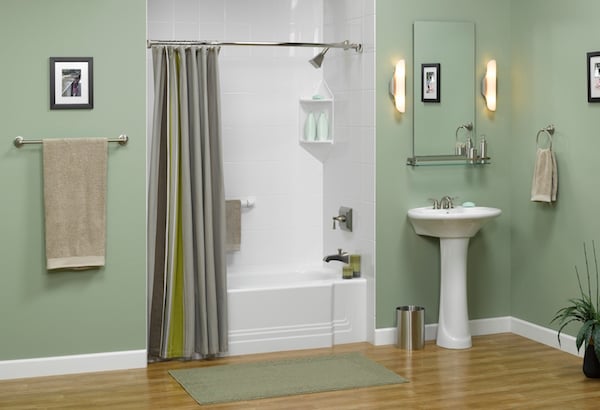
When it comes to going green, few aspects of your home have more potential than your plumbing. Greening your plumbing can reduce home energy costs, improve your home from a health perspective, and it’s easier on the environment. If those improvements sound like something you’d be interested in, then read on to find out what you can do to turn your plumbing a darker shade of green.
The Cost of Going Green with Home Plumbing Systems
We’ll get to specifics in a minute, but for starters let’s address what’s on most homeowners’ minds when the subject of green remodeling comes up: cost. With home plumbing, the truth of the matter is that you’re unlikely to spend much more by going green than if you go a more conventional route. And even if you do run into higher initial costs, when you figure in that going green will help reduce energy costs and water usage, your investment is almost guaranteed to end up paying for itself over time.
The True Value of Going Green with Plumbing
Of course, putting a dent in your monthly utility bills is only the tip of the iceberg. The real value of going green is far higher than any calculations involving dollars and cents can reflect. For example, green plumbing provides cleaner water, making for a healthier home, and it conserves valuable water resources. When you look at it from that perspective, it’s safe to say that going green is as much about passing a better world onto your children and grandchildren as it is about you saving a buck or two, and that’s a tough thing to put a price tag on.
Green Plumbing to Reduce Home Energy Use
So, just what can you do to start saving money, and the environment, when it comes to the plumbing in your home? Here’s a list of ideas to get your gears turning, starting with these suggestions for how to save some green by going green in the plumbing department.
- Insulate Pipes—Uninsulated pipes, especially in exterior walls, are responsible for a significant amount of heat loss as water travels from your hot water heater to the faucet. Insulating your pipes helps to eliminate this problem, and can cut standby energy loss at your hot water heater as well, saving you even more on your utility bills.
- Remove Plumbing from Exterior Walls—If you can, avoid running your home’s plumbing through outside walls. By running pipes through conditioned spaces instead, you’ll reduce unnecessary heat loss caused by close proximity to cold outdoor temperatures.
- Install an On-Demand Hot Water Circulation Pump—These pumps send hot water to your fixtures in a matter of seconds, saving you money on two fronts. For starters, you won’t lose heat as hot water unnecessarily sits unused in the pipes, and since you won’t have to run water at the faucet while you wait for hot water to arrive, you’ll reduce your water usage, as well.
- Install a New Hot Water Heater—Hot water heating can account for as much as 15 percent of your total home energy use. Replacing an older unit with a new, high-efficiency one can have a big impact when it comes to reducing your home heating costs. Check our True Cost Guide for gas hot water heater prices.
Green Plumbing for a Healthier Home
Green remodeling places just as much emphasis on creating healthier homes as it does on improving energy efficiency— and home plumbing is no exception. Here’s a list of suggestions of things you can do to make sure the water in your home is as clean and healthy as possible.
- Investigate Your Water Supply—For starters, get a copy of your municipal water quality report, or have your water independently tested to identify if there are any problems you need to focus on. Since different water filtration and purification systems target different water quality issues, it’s vital that you know what you’re dealing with before you move forward.
- Install Chlorine Filters on Showerheads—Seeing as how chlorine is absorbed six times faster through the skin than through the digestive system, it’s not surprising to hear chlorine sensitivity is a serious problem for many people. Special chlorine filters installed in your showerhead can reduce chlorine levels significantly.
- Install a Whole House Water Filtration System—Water filtration systems for homes can eliminate the presence of chemicals, particulates, and micro organisms in your water. That makes for healthier water for you and yours, and helps to extend the life of hot water heaters and plumbing fixtures in areas that have high sediment levels in the water supply.
- Install Activated Carbon Filters or Reverse Osmosis Systems—If you’re particularly concerned with poor water quality and drinking water, consider introducing one of these water purification strategies into your home. Activated carbon filters are installed on faucets and shower heads to absorb pollutants, while reverse osmosis filtration systems are generally installed at individual sinks to provide purified water for drinking, cooking, or brushing teeth.
Ready to start your green plumbing?
Find ProsGreen Plumbing for a Better Environment
Finally, there’s the environment to consider. Good environmental stewardship is at the heart of any green remodeling project, and since green plumbing places an emphasis on water conservation, it certainly qualifies in that regard. Here are some suggestions on how to achieve positive environmental impacts by going green with your plumbing.
- Install Low-Flow Showers and Faucets—Low-flow showers and faucets can reduce home water usage by as much as 60 percent! And since you’ll be using less hot water in the process, these easy green upgrades are good for the environment and your pocketbook at the same time.
- Install Low-Flush Toilets—Flushing your toilet accounts for the single biggest water draw in your home, to the tune of about 28 gallons of water per person, per day. A typical low-flush toilet uses anywhere from two to five times less water per flush, depending on the toilet you presently have installed.
- Install a Home Leak Monitoring Device—Leaking pipes, faucets, and toilets can account for literally thousands of gallons of wasted water every month. A home leak monitoring device will alert you when it senses a problem, so you can find and fix the problem as soon as possible.
- Install Faucet Flow Reducers—These easy-to-install flow reducers fit on the end of your faucets (where the aerator screws on), and can reduce faucet flow by as much as 40 percent.
- Install Energy-Efficient Appliances—Energy-efficient dishwashers and clothes washers can reduce water consumption at these appliances by as much as 50 percent.
Which Shade of Green is Right for You?
While thinking green when it comes to the plumbing in your home is a smart choice for your pocketbook, your home, and the environment, it’s not unusual for homeowners to feel a little overwhelmed when presented with the full scope of green remodeling options. If you’re feeling unsure about how green you’re willing to go with plumbing, there’s no need to worry. Going green is not an all-or-nothing proposition, and any step you take in a green direction is a smart one, whether you opt for easy-to-install flow reducers on your kitchen and bathroom faucets, or go all out with a new hot water heater, whole house water filtration system, and low-flush toilet.
If you do think green is the right choice for your upcoming plumbing project, talk with your contractor about adopting a green remodeling philosophy, find a contractor who specializes in green building and remodeling, or seek out the services of a green consulting firm so you can be sure that your new plumbing is as green as it comes.
So how much does it cost to repipe a house to go green? Your contractor will be able to give you an accurate cost range.
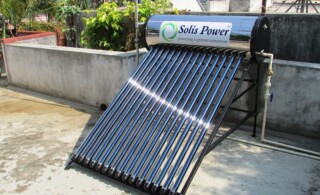 Going Green: Hot Water Heater
Going Green: Hot Water Heater 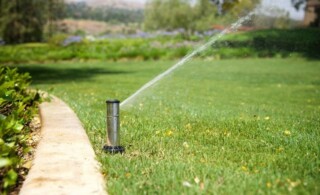 8 Water-Saving Home Renovations
8 Water-Saving Home Renovations 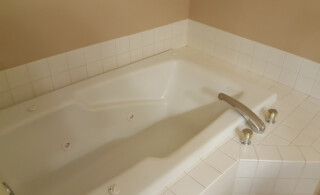 How to Find & Repair a Bathtub Leak
How to Find & Repair a Bathtub Leak 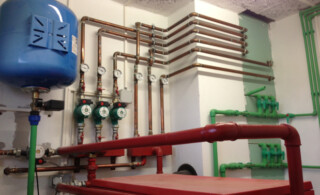 Choosing Green: Boilers and Radiator Heating Systems
Choosing Green: Boilers and Radiator Heating Systems 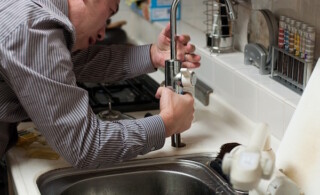 How to Hire a Qualified, Reasonable & Reliable Plumber
How to Hire a Qualified, Reasonable & Reliable Plumber 

Are You Familiar With This Topic? Share Your Experience.